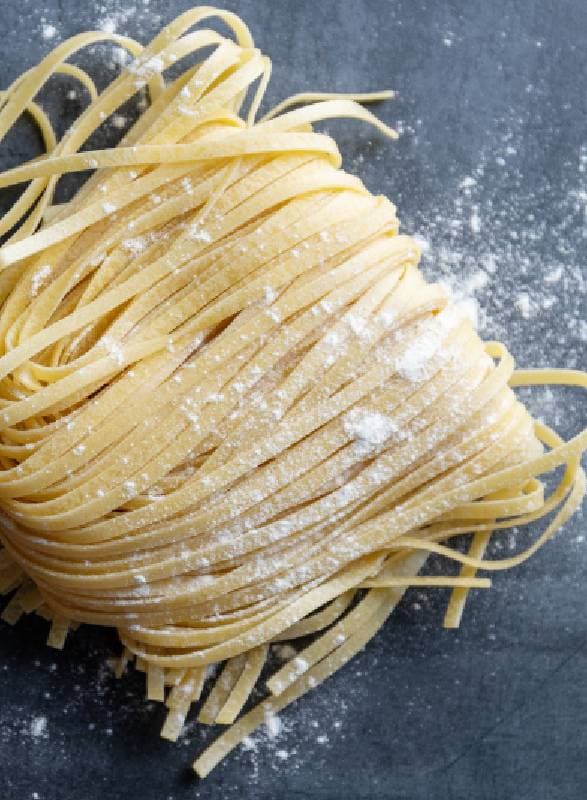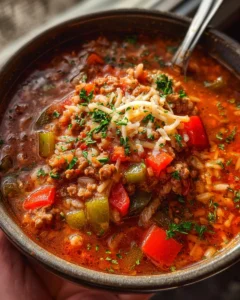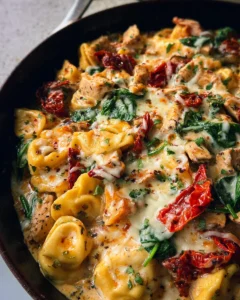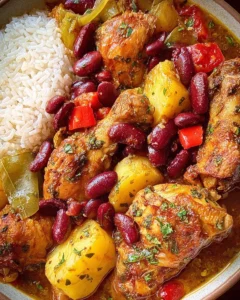Embarking on a gluten-free journey doesn’t mean you have to give up on your favorite pasta dishes. In fact, it opens up a whole new world of flavors, textures, and nutritional benefits. This comprehensive guide is your go-to resource for everything you need to know about making delicious, homemade gluten-free pasta. From selecting the right ingredients to mastering the cooking techniques, we’ve got you covered.
 PinPin
PinPin Pin
Pin
So, let’s dive in and explore the art of gluten-free pasta making, ensuring that your culinary creations are not only safe for those with gluten sensitivities but also incredibly satisfying for everyone at the table.
Introduction to Gluten-Free Pasta
Introduction to Gluten-Free Diets
In recent years, the demand for gluten-free options has skyrocketed, largely due to the increasing number of people diagnosed with celiac disease or gluten sensitivities. Gluten, a protein found in wheat, barley, and rye, can cause serious health issues for these individuals. Hence, the quest for gluten-free alternatives has become more than a dietary preference—it’s a necessity for many.
Why Gluten-Free Pasta?
Pasta, a staple in many diets, traditionally relies on gluten for its elasticity and texture. However, the good news is that making gluten-free pasta at home is not only possible but can also be a delightful culinary adventure. With the right mix of flours and a bit of kitchen wizardry, you can recreate the beloved textures and flavors of traditional pasta, sans gluten.
The journey to perfect gluten-free pasta begins with understanding the alternatives to traditional wheat flour. A variety of gluten-free flours are available, each offering unique qualities that can enhance your pasta. For instance, rice flour is known for its mild flavor and smooth texture, making it a popular choice for a neutral-tasting pasta. On the other hand, quinoa flour brings a nutty flavor and a boost of protein, turning your pasta into a nutritious powerhouse.
But it’s not just about swapping flours. Achieving the right texture in gluten-free pasta requires a little more finesse. Binders such as xanthan gum or guar gum play a crucial role in mimicking gluten’s elasticity, ensuring that your pasta holds together beautifully, whether boiled, baked, or tossed in your favorite sauce.
As we delve deeper into the world of gluten-free pasta making, remember that this journey is about exploration and enjoyment. With each batch, you’ll learn more about the ingredients and techniques that work best for you, leading to deliciously satisfying gluten-free pasta dishes that everyone will love. So, grab your apron, and let’s get started on this exciting culinary adventure!
Ingredients for Gluten-Free Pasta
Choosing the Right Flour
The cornerstone of any gluten-free pasta recipe is the flour. But not all flours are created equal, especially when it comes to gluten-free baking and pasta making. The trick lies in finding the right blend that mimics the texture and taste of traditional pasta.
- Rice Flour: A fan favorite for its mild flavor, rice flour is often the base in many gluten-free pasta recipes. It’s light, doesn’t overpower with a strong taste, and offers a smooth texture that’s close to traditional pasta.
- Corn Flour: Brings a slight sweetness and a beautiful golden hue to your pasta. It’s a bit heartier than rice flour and works well in combination with other flours to provide a more robust flavor.
- Quinoa Flour: Packed with protein and a nutty flavor, quinoa flour not only adds nutritional value but also a unique taste to your pasta. It’s a bit more expensive but well worth the investment for the added health benefits.
- Other Flours: Don’t be afraid to experiment with other gluten-free flours like almond, chickpea, or tapioca. Each brings its own set of flavors and textures, allowing you to customize your pasta to your liking.
Binders and Additives
Without gluten to hold everything together, gluten-free pasta needs a little help. This is where binders and additives come into play, acting as the glue that gives your pasta the right texture.
- Xanthan Gum: A little goes a long way with xanthan gum. It helps mimic the elasticity of gluten, giving your pasta the flexibility and chewiness that’s often missing in gluten-free versions.
- Guar Gum: Similar to xanthan gum, guar gum can be used as a binder in gluten-free pasta recipes. It’s derived from guar beans and is excellent for improving the texture and thickness of your pasta dough.
The science behind these binders is fascinating. They interact with the moisture in your dough, creating a sticky network that holds the flour together, much like gluten would. This magic allows the pasta to maintain its shape and texture, whether you’re crafting spaghetti, fettuccine, or any shape your heart desires.
Incorporating these ingredients into your gluten-free pasta recipes opens up a world of culinary possibilities. By understanding the properties of each flour and how binders affect the dough, you’re well on your way to creating delicious, homemade gluten-free pasta that rivals any traditional version. So, don’t be shy—start experimenting and find the perfect blend that speaks to your palate and dietary needs.
Gluten-Free Pasta Recipes
Basic Gluten-Free Pasta Recipe
Diving into gluten-free pasta making can seem daunting at first, but with a simple recipe as your guide, you’ll be whipping up homemade pasta in no time. Here’s a basic recipe to get you started:
Ingredients:
- 1 cup of gluten-free flour blend (a mix of rice, corn, and quinoa flour works wonders)
- 1/4 teaspoon xanthan gum (if your blend doesn’t already include it)
- 1/2 teaspoon salt
- 2 large eggs
- 1 tablespoon olive oil
- 1-2 tablespoons water (as needed)
Instructions:
- In a large bowl, whisk together the gluten-free flour blend, xanthan gum (if using), and salt.
- Make a well in the center of the flour mixture and add the eggs and olive oil. Begin mixing with a fork, gradually incorporating the flour into the wet ingredients.
- As the dough starts to come together, use your hands to knead it into a smooth ball. If the dough is too dry, add water, one tablespoon at a time, until it reaches a pliable consistency.
- Wrap the dough in plastic wrap and let it rest for 30 minutes at room temperature. This allows the binders to work their magic.
- Roll out the dough to your desired thickness, then cut it into your favorite pasta shapes.
- To cook, bring a large pot of salted water to a boil. Add the pasta and cook for 2-4 minutes, or until al dente. Drain and serve with your favorite sauce.
Variations of Gluten-Free Pasta
Once you’ve mastered the basic recipe, the fun really begins. You can start experimenting with different flavors and ingredients to make your gluten-free pasta even more exciting.
- Flavored Pasta: Enhance your pasta with herbs and spices for an extra flavor kick. Try adding a teaspoon of dried basil, oregano, or even a pinch of red pepper flakes to the dough mixture.
- Vegetable-Infused Pasta: For a nutritional boost and a splash of color, incorporate vegetable purees into your pasta dough. Spinach, beet, and carrot are excellent choices. Replace one tablespoon of water in the basic recipe with three tablespoons of your chosen vegetable puree.
For those looking to elevate their vegetable-infused pasta dishes, our Noodles with Peanut Sauce and Baked Garlic Chili Tofu recipe offers a delightful blend of flavors that perfectly complements any gluten-free pasta base.
The beauty of making gluten-free pasta at home is the endless possibilities for customization. Whether you stick to the basics or venture into more adventurous variations, the key is to enjoy the process and savor the delicious results. So, go ahead, get creative in the kitchen, and transform simple ingredients into extraordinary gluten-free pasta dishes that will delight your taste buds and accommodate your dietary needs.
Cooking Techniques and Tips
Boiling Gluten-Free Pasta
Boiling pasta might seem straightforward, but gluten-free pasta requires a tad more attention to avoid ending up with a mushy mess. Here’s how to nail it every time:
- Generous Water: Use plenty of water—this gives the pasta ample space to cook evenly and reduces sticking.
- Rolling Boil: Wait until the water is at a full, rolling boil before adding your pasta. This helps it start cooking immediately, preventing clumping.
- Stirring: Give your pasta a good stir shortly after adding it to the pot. A quick stir helps prevent the pieces from sticking together.
- Testing Doneness: Start tasting the pasta a couple of minutes before you think it’s done. Gluten-free pasta can go from perfect to overcooked in a flash.
- Rinsing: Unlike traditional pasta, rinsing gluten-free pasta after draining can help remove any surface starchiness, improving the texture.
Transform your gluten-free pasta into a refreshing meal with inspiration from our Orzo Salad with Vegan Honey Mustard Dressing recipe. While orzo is traditionally wheat-based, substituting it with a gluten-free pasta shape can create a pasta salad that’s both nutritious and full of flavor.
Baking and Other Cooking Methods
Gluten-free pasta isn’t just for boiling. It’s incredibly versatile and can be used in a variety of dishes:
- Baked Dishes: Gluten-free pasta bakes beautifully. Just undercook it slightly when boiling, as it will continue to cook in the oven.
- Pasta Salads: Cooked gluten-free pasta cools down nicely for salads. Toss it with a bit of olive oil after cooking to keep it from sticking, then chill.
The key to success with gluten-free pasta lies in experimentation and patience. Each brand or type of pasta might behave slightly differently, so getting to know your preferred pasta’s quirks is part of the fun. And remember, even if it doesn’t turn out perfectly every time, it’s all part of the learning curve.
Nutritional Benefits
Comparing Nutritional Values
One of the perks of gluten-free pasta is its potential nutritional advantage over traditional pasta, especially when you choose your ingredients wisely:
- Higher Protein Content: Flours like quinoa or chickpea significantly boost the protein content, making your pasta more of a powerhouse meal.
- Fiber Boost: By incorporating flours such as almond or adding vegetable purees, you can increase the fiber content, aiding digestion and keeping you fuller longer.
However, it’s important to note that not all gluten-free pasta is created equal. Pre-packaged options might contain additives or less nutritious flours, so reading labels is key. Making your pasta at home allows you to control the ingredients and pack in the nutrition.
Enhance the nutritional advantage of your gluten-free pasta dishes by incorporating fresh, vibrant ingredients as seen in our Mango Salad with Spinach and Blueberries recipe. It’s a testament to how diverse and nutrient-rich a gluten-free diet can be.
FAQs
Frequently Asked Questions
Let’s tackle some common queries that pop up when venturing into the world of gluten-free pasta making:
- Can I make gluten-free pasta without a pasta maker? Absolutely! A rolling pin and a sharp knife or a pasta cutter can do the job just fine.
- How do I store homemade gluten-free pasta? Dry it on a rack for a few hours, then store it in an airtight container in a cool, dry place for up to a month. For fresh pasta, keep it in the fridge and use within a couple of days.
- Why did my pasta come out sticky? Stickiness can result from overcooking or not using enough water. Next time, try adding more water to the pot and keep a close eye on the cooking time.
Embracing gluten-free pasta making at home opens up a world of culinary exploration and enjoyment. With each batch, you’ll refine your skills, discover new favorite recipes, and enjoy the satisfaction of creating delicious, nutritious meals that cater to your dietary needs. So, keep experimenting, and relish in the joy of homemade pasta.


